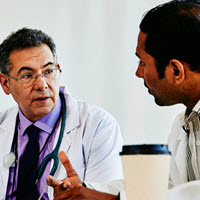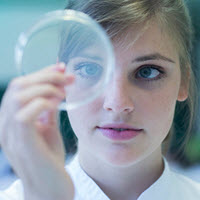North America
International Markets
Europe
North America
International Markets
Europe
3 Trends I’m Watching in Drug Delivery Devices


My name is Mark DeStefano and I’m Director of Global Technology Innovation, Combination Products and Device R&D. Our team designs and develops drug delivery solutions such as pre-filled syringes, auto-injectors, inhalers, nasal sprays, and implants. These are the latest innovations I’m watching.

1 Patient-centric innovation
Device engineering is increasingly focused on innovating to provide the best patient experience by identifying and developing technologies that fulfil patient needs and are easy to use.
At Teva, we recently completed a study to demonstrate how users can easily and effectively transition between different types of drug delivery devices. The outcome could more easily enable the substitution of older products for newer, easier to use, more innovative devices, even in generic applications, one of Teva’s key focus areas. We also performed a human injection study to investigate if we could help control injection pain through specific device features and functionality.
We’re using our research to educate the industry, including regulatory agencies, on improved methodologies that can be used for submission purposes and help to reduce complexity, improve user experience, and speed up the process of getting medication to patients.

2 Using digital technologies to help accelerate clinical trials
Right now, there is a focus on early identification of technologies that can be useful in clinical applications, collecting clinical outcome data and assessing impact to patients.
We are partnering with Teva’s Translational and Precision Medicine organization to identify, develop, and evaluate various digital technologies and secondary systems which allow alternative biomarker assessments in clinical trials. This could potentially reduce clinical trial times and population sizes, collect more quantifiable data versus qualitative data, reduce the impact on clinical patients, and ultimately reduce drug development program costs and time.
We’ve recently completed several technology evaluation trials with patients, with the goal of developing more efficient and effective methods of accurately collecting data and detecting specific biomarkers, to provide a better patient experience.

3 Developing drug delivery technology platforms to benefit patients and operations
The traditional mindset has been ‘one project, one device’, with teams focusing on single specific projects. These days, device technology platforms have a broad range of applicability for groups of projects, thereby streamlining the development process, reducing program risk and minimizing the impact of manufacturing systems, which can help accelerate ‘medicine to patient’ timelines. This is no longer about building one device for one product but leveraging innovative device technology and providing bigger solutions to optimize the user experience.
At Teva, we’re also doing more early device development and technology feasibility evaluation work, so there's less risk of device failure. This means we don't need to implement new device variants late in the game or miss a launch window because of device deficiency – instead we discover issues sooner rather than later.
NPS-ALL-NP-01432-DECEMBER-2024
Find out more:
- Learn more about the innovations that are helping us support patients with unmet needs
- Browse our 3 Trends series; from clinical research studies to sustainability
- Read about our innovative work in drug devices and meet some of the team
- Want to get involved in the inspiring work we do? Check out our Careers pages





































































